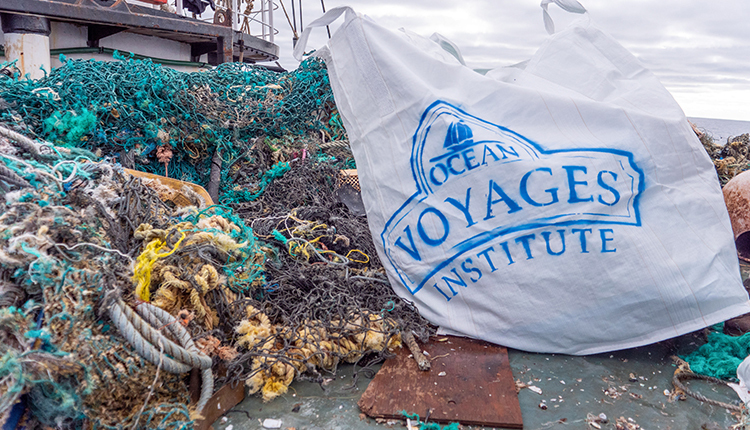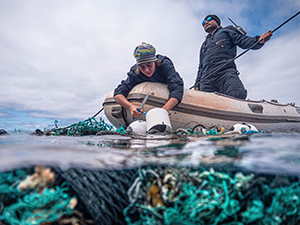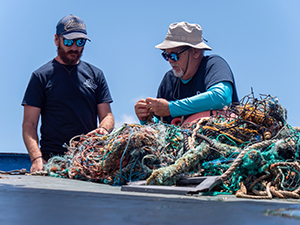Ocean Voyages Institute conducts largest open ocean clean-up |
| By Seaside Retailer Staff |
Crew successfully removes 103 tons of waste during 48-day expedition in the Great Pacific Garbage Patch. After a 48-day expedition Ocean Voyages Institute’s marine plastic recovery vessel, S/V KWAI, has docked at the port of Honolulu, successfully removing 103 tons of fishing nets and consumer plastics from the North Pacific Subtropical Convergence Zone, more commonly known as the Great Pacific Garbage Patch or Gyre. Ocean Voyages Institute has set a new record with the largest at sea clean-up in the Gyre to date, more than doubling its own results from last year.  S/V Kwai crew remove a GPS-enabled satellite tracker from a ghost net in the Gyre. “I am so proud of our hard working crew,” says Mary Crowley, founder and executive director of Ocean Voyages Institute. “We exceeded our goal of capturing 100 tons of toxic consumer plastics and derelict ‘ghost’ nets, and in these challenging times, we are continuing to help restore the health of our ocean, which influences our own health and the health of the planet.” Crowley adds, “The oceans can’t wait for these nets and debris to break down into microplastics which impair the ocean’s ability to store carbon and toxify the fragile ocean food web.” Known as the “Ghost Net Buster,” Crowley is renowned for developing effective methods to remove significant amounts of plastics out of the ocean, including 48 tons of toxic plastics during two ocean clean-ups in 2019, one from the Gyre and one from the waters surrounding the Hawaiian islands. When the sailing cargo ship, S/V KWAI, arrived in Honolulu June 23, it had completed a 48-day at sea clean-up mission that began at the Hawaiian port of Hilo on May 4, after a three week self- imposed quarantine period to ensure the health of crew members and safety of the mission, in the face of the COVID-19 pandemic. During the expedition, the KWAI’s multinational crew collected marine plastic pollution with the help of GPS satellite trackers that Ocean Voyages Institute designed with engineer Andy Sybrandy, of Pacific Gyre Inc. These beacons are placed on nets by volunteer yachts and ships. Drones, as well as lookouts up the mast, enable the ship’s crew to home in on the debris. They then recover the litter, place it in industrial bags, and store it in the ship’s cargo hold for proper recycling and repurposing at the end of the voyage.  S/V Kwai crew examine nets removed during their expedition. S/V KWAI, led by Captain Brad Ives, and Ocean Voyages Institute are planning a second voyage to the Gyre departing the end of June to continue clean-up of this area, which is so besieged by toxic debris. The length of a second summer leg will be determined by how successful Ocean Voyages Institute is in securing additional donations. “Our solutions are scalable, and next year, we could have three vessels operating in the North Pacific Gyre for three months all bringing in large cargos of debris,” says Crowley. “We are aiming to expand to other parts of the world desperately needing efficient clean-up technologies.” Crowley adds: “There is no doubt in my mind that our work is making the oceans healthier for the planet and safer for marine wildlife, as these nets will never again entangle or harm a whale, dolphin, turtle or reefs.” ■ |
